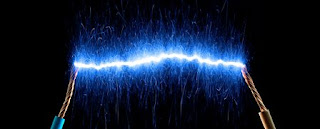Electricity produced
Toolbox Talk
Electricity produced Toolbox Talk
Electricity produced via friction is a reality of
nature. It has been and will consistently be a worry to everybody, all over.
Regardless of whether at work or play we as a whole have encountered
electricity produced via friction in some structure. Mix your feet over the
floor covering on a cool, dry day and contact a person or thing – you'll get a
static stun.
Watch a tempest and witness nature's capacity
through lightning another case of electricity produced via friction.
What is friction based electricity?
Power is essentially the progression of free electrons. Every electron is a piece of a particle, which is the fundamental cosmetics of all issues. The issue is everything known to man.
At the point when these electrons develop in inconsistent sums on two unique items, and when the development turns out to be sufficiently huge, power streams as a static release or a sparkle. The static charge on one article can move to another in two different ways – conduction or enlistment. The thing that matters is that in conduction, the articles must be contacting all together for the charges move. In acceptance, the articles don't need to be contacting. A charge on one article will move electrons to a non-charged item until there is an equilibrium of charges on the two things. This equilibrium is known as balance. Since everything is the issue, energizes expand on everything (gases, dust particles, fluids, lines, hardware, and individuals.)
To keep away from a blast in the work environment, injury to representatives, and pulverization to gear, static development must be released to a non-charged article. This revisitation of balance can be securely accomplished in two different ways – Bonding and Grounding.
Holding
Holding is the strategy of electrically
interfacing two items so they are at a similar electrical potential or harmony.
It is cultivated by the utilization of a holding wire interfacing two articles.
A similar impact can be accomplished by direct contact between the two articles
insofar as paint or other covering doesn't intrude on the contact. Reinforced
items are additionally associated with the ground, so static charges can be
totally disseminated. Continuously keep compartments shut until after
holding has occurred. At the point when you are done, close holders before
disengaging the holding wire.
Establishing
Establishing is the method of interfacing an item
to an electrical ground or earth potential. It gives an electrical way into the
earth, or to any huge metal structure of a holding that permits the charges to
disseminate. Establishing is the surest strategy for controlling static
charges!
What causes electricity produced via friction?
Friction based electricity is the consequence of unevenness among negative and positive charges in an item. These energize
can expand on the outside of an article until they figure out how to be
delivered or released. ... The scouring of specific materials against each
other can move negative charges or electrons.
Would you be able to be executed by friction based electricity?
You may even observe a flash if the release of
electrons is sufficiently huge. Fortunately, friction-based electricity can't
genuinely hurt you. Your body is made to a great extent out of water and water
is a wasteful channel of power, particularly in sums this little. Not that
power can't do any harm or murder you.
What are 3 instances of static?
What are the three instances of electricity produced
via friction? (A few models may include: strolling over a floor covering and
contacting a metal entryway handle and pulling your cap off and having your
hair remain on end.) When is there a positive charge? (A positive charge
happens when there is a deficiency of electrons.)
What materials can cause friction based on electricity?
Materials that will, in general, pick up or lose
electrons incorporate fleece, human hair, dry skin, silk, nylon, tissue paper,
saran wrap and polyester—and when testing these materials you ought to have
discovered that they moved the aluminum ball likewise to how the Styrofoam
plate did.








0 Comments